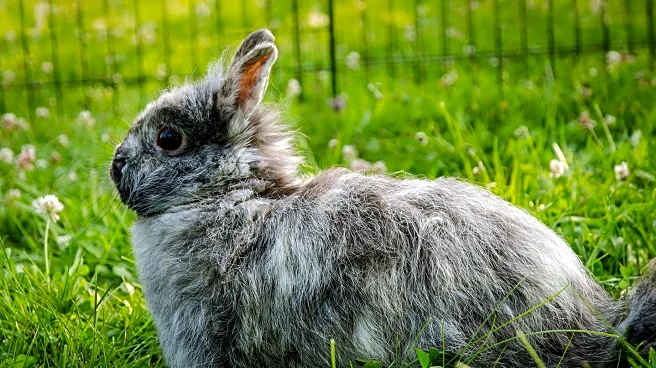What's Happening?
A peculiar phenomenon involving rabbits with horn- and tentacle-like growths has been reported in Minnesota and Nebraska. These deformities are caused by the cottontail papilloma virus (CRPV), also known as Shope papilloma virus. The virus, which does not affect humans or common pets, is spread by mosquitoes, ticks, or fleas that bite infected rabbits and transmit the virus to others. Initially appearing as small red bumps, the infection progresses to wart-like tumors that can harden into keratinized papillomas, resembling horns and tentacles. In severe cases, these growths can lead to deadly skin cancer. The virus has been known to scientists for decades, but recent sightings have increased, particularly during the summer months when mosquito and tick populations are high.
Why It's Important?
The spread of CRPV poses a significant threat to rabbit populations in the Midwest, potentially leading to increased mortality rates among affected animals. While the virus does not pose a direct threat to humans, it highlights the impact of wildlife diseases on ecosystems and the importance of monitoring and managing such outbreaks. The presence of these 'Frankenstein' rabbits could affect local biodiversity and disrupt ecological balances. Additionally, the unsettling appearance of these rabbits may cause concern among residents, prompting wildlife officials to issue warnings to avoid contact with infected animals.
What's Next?
Wildlife officials are likely to continue monitoring the spread of CRPV and its impact on rabbit populations. Public awareness campaigns may be initiated to educate residents about the virus and the importance of not interfering with infected animals. Research into potential treatments or management strategies for CRPV could be explored to mitigate its effects on wildlife. As the virus spreads, there may be increased collaboration between states to address the issue and prevent further ecological disruption.
Beyond the Headlines
The emergence of CRPV in rabbits raises broader questions about the role of climate and environmental changes in the spread of wildlife diseases. Warmer temperatures and increased insect populations may facilitate the transmission of viruses like CRPV, highlighting the interconnectedness of climate and health. This situation also underscores the ethical considerations in wildlife management, balancing intervention with natural processes.












